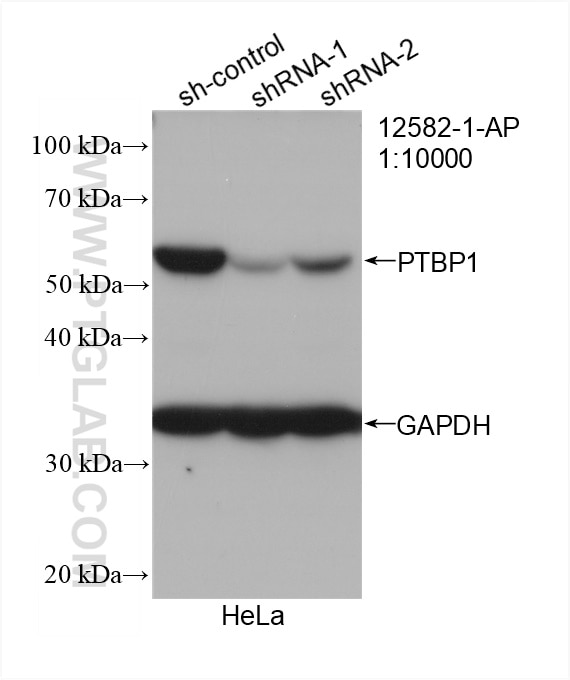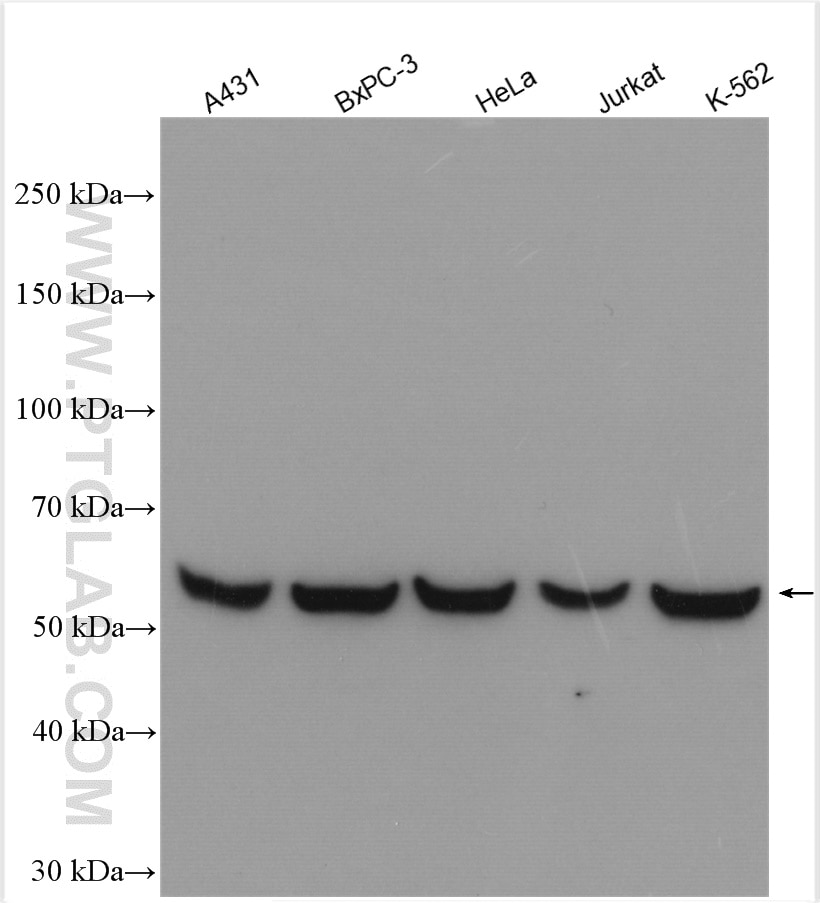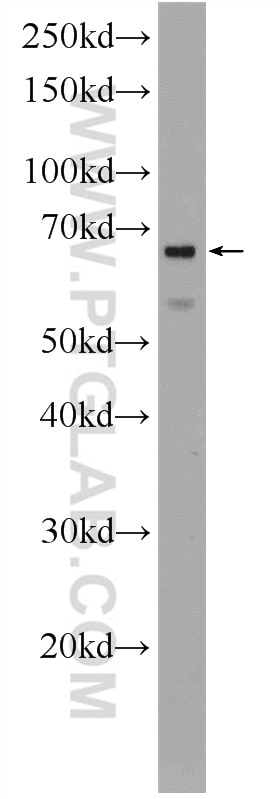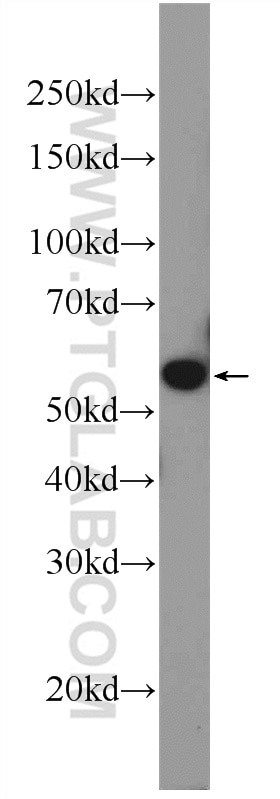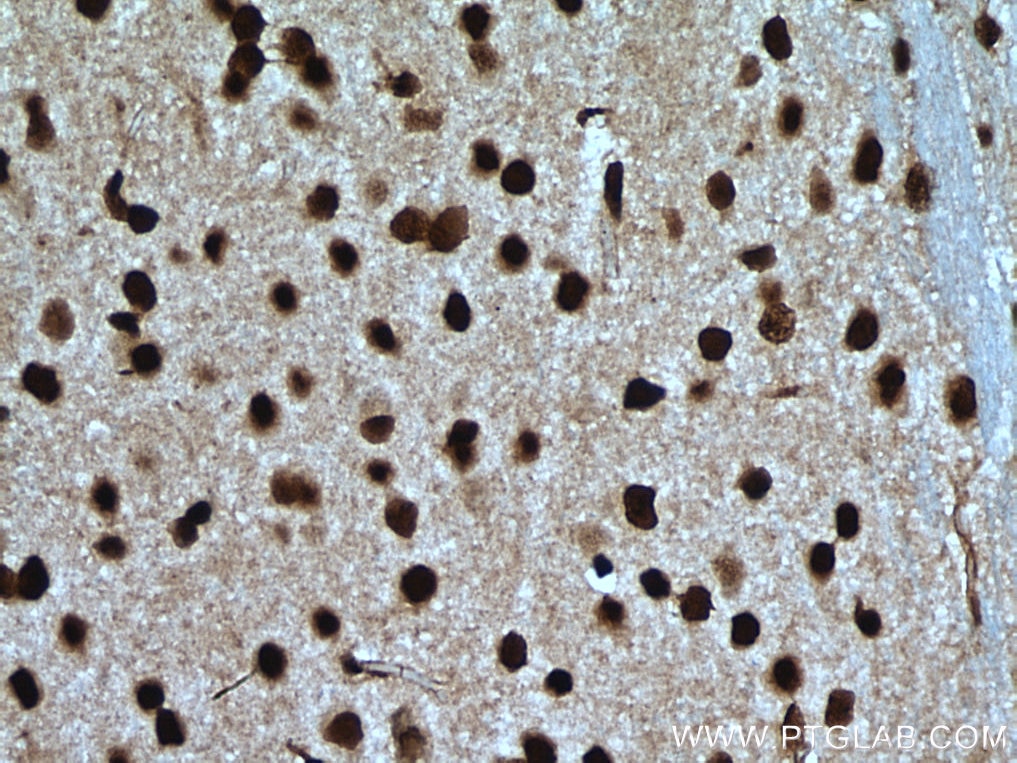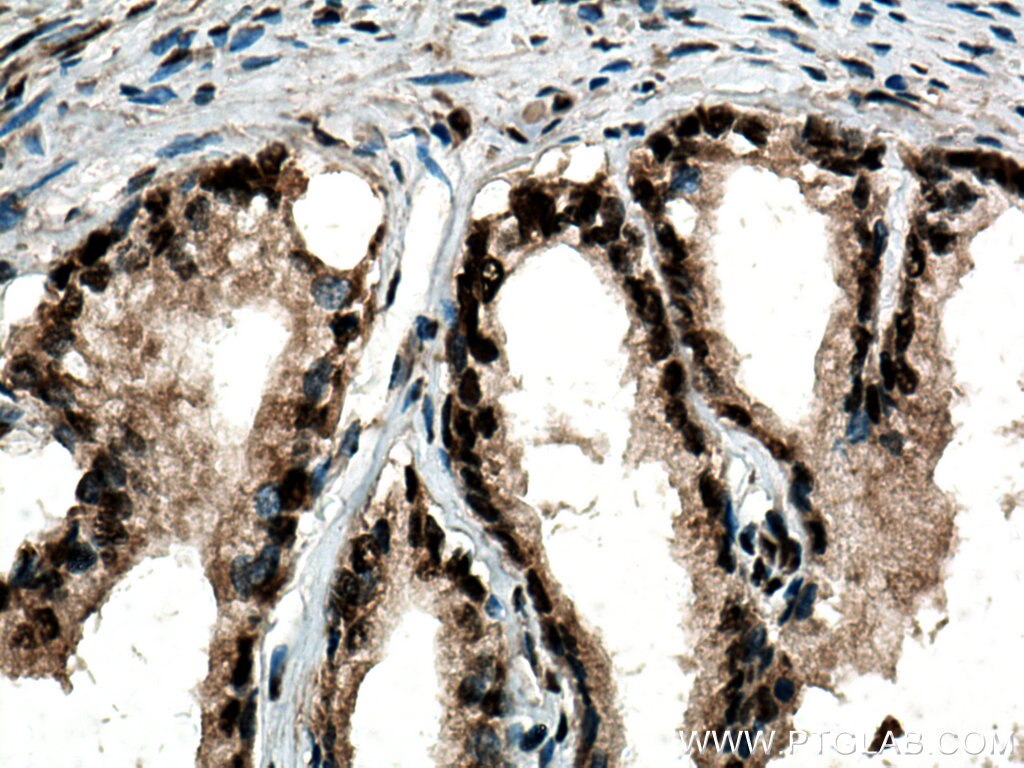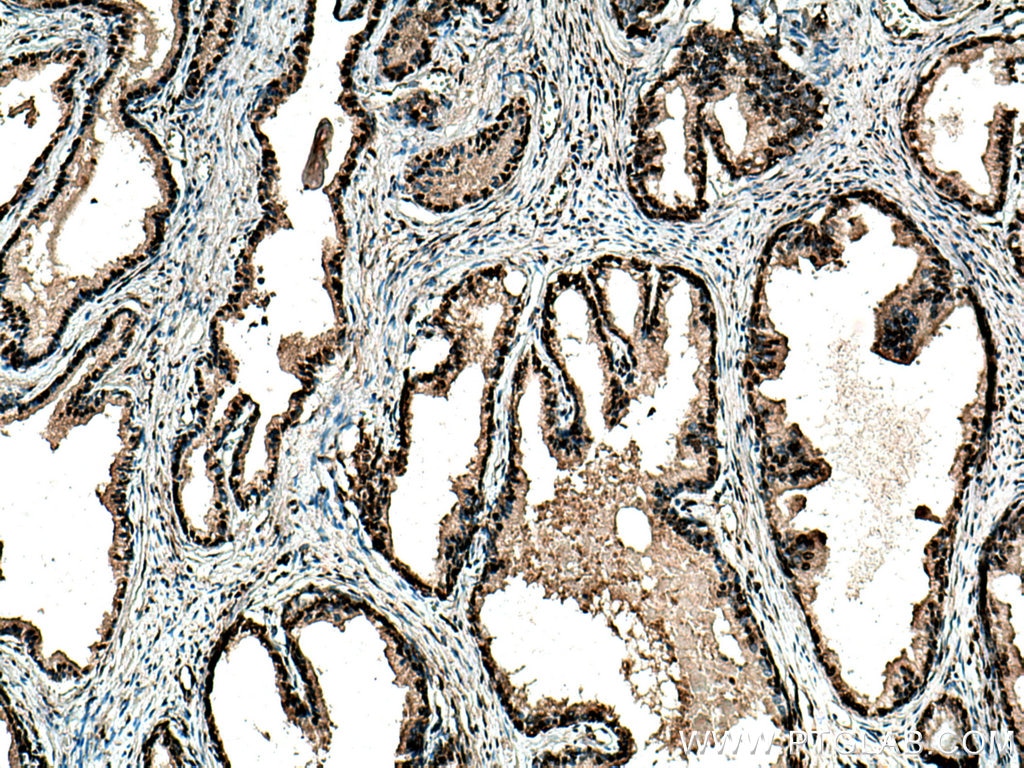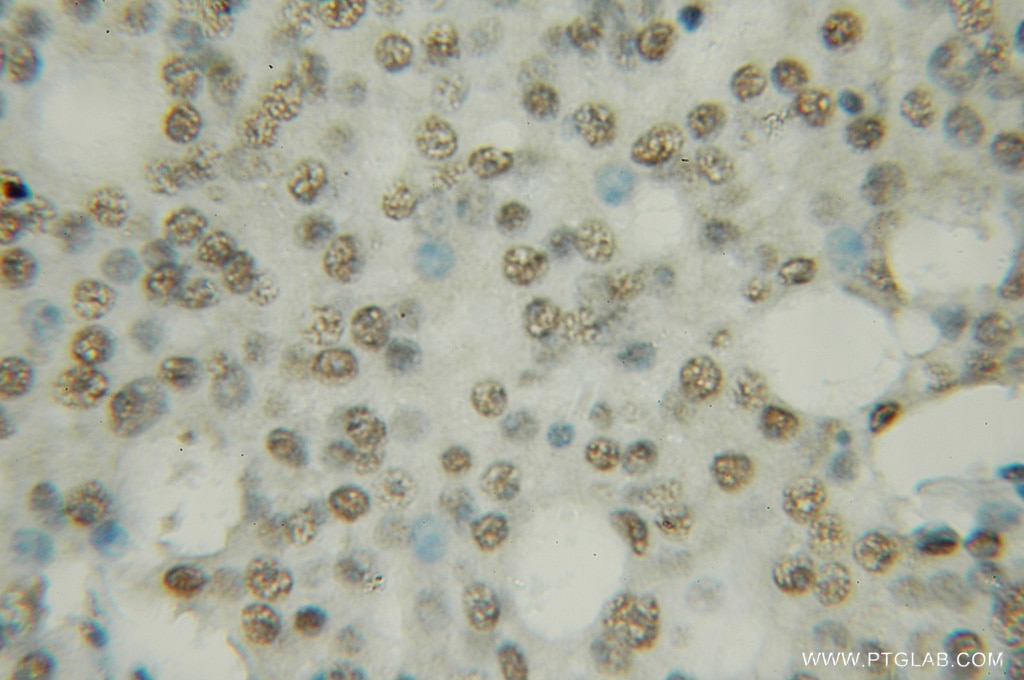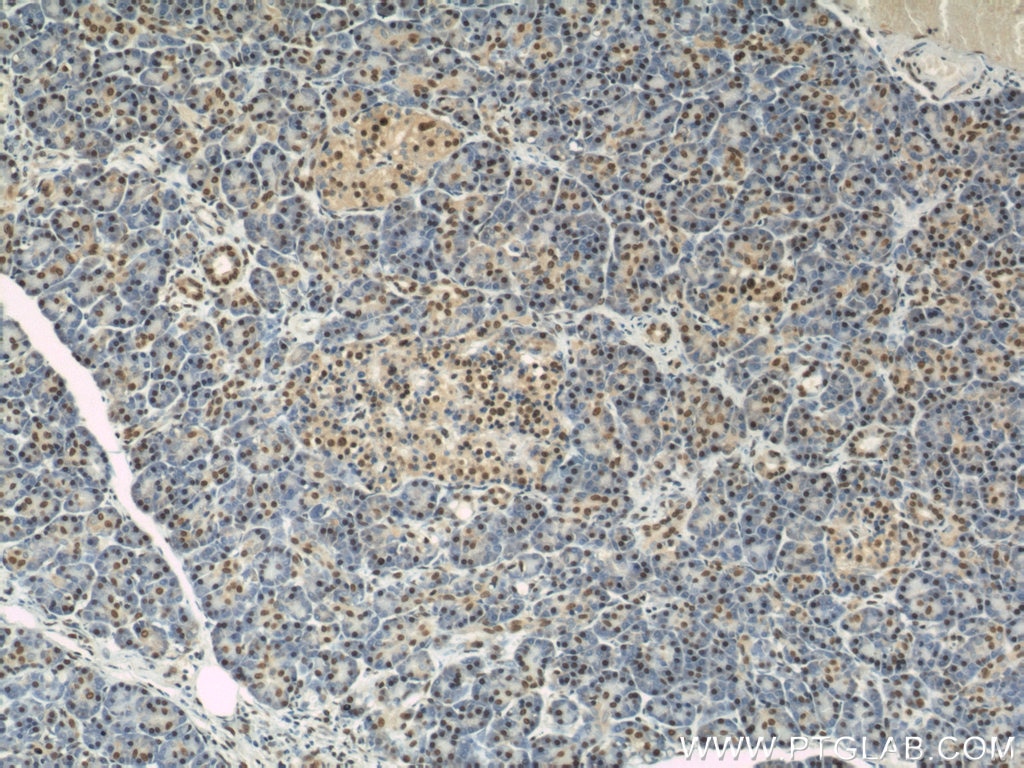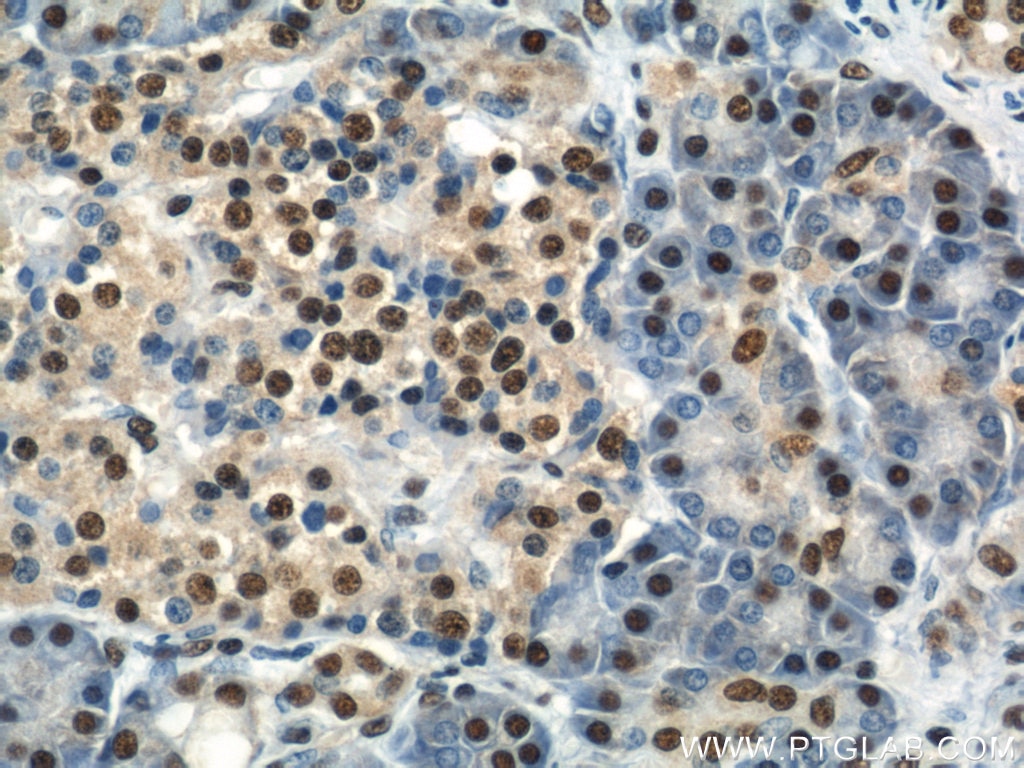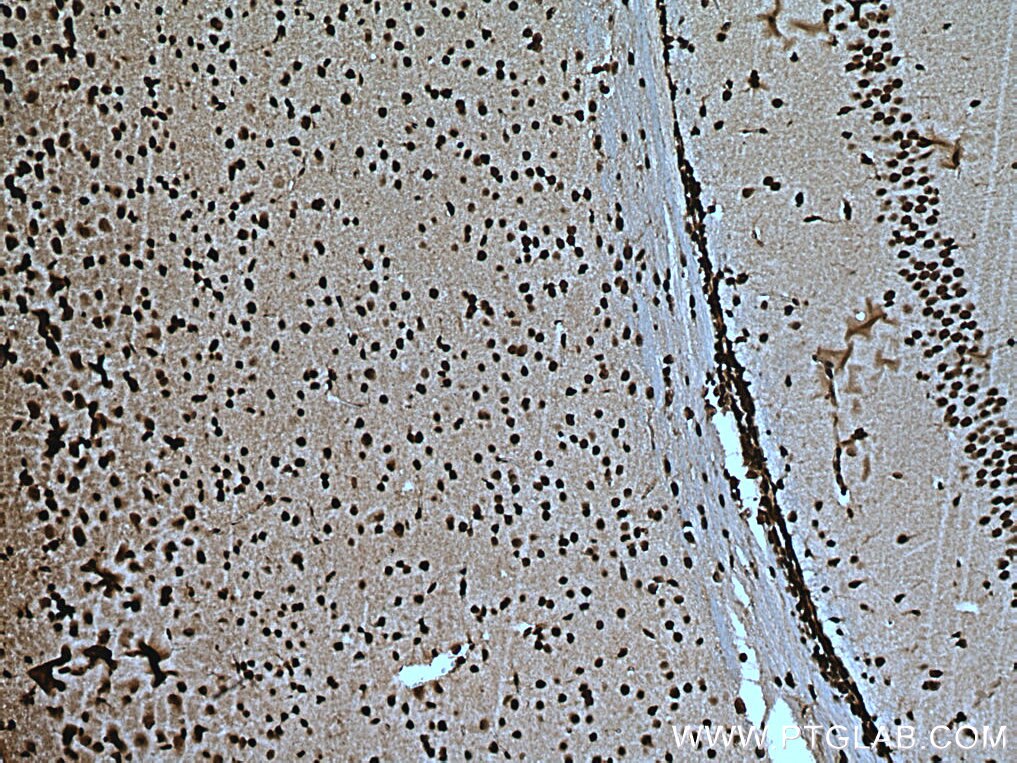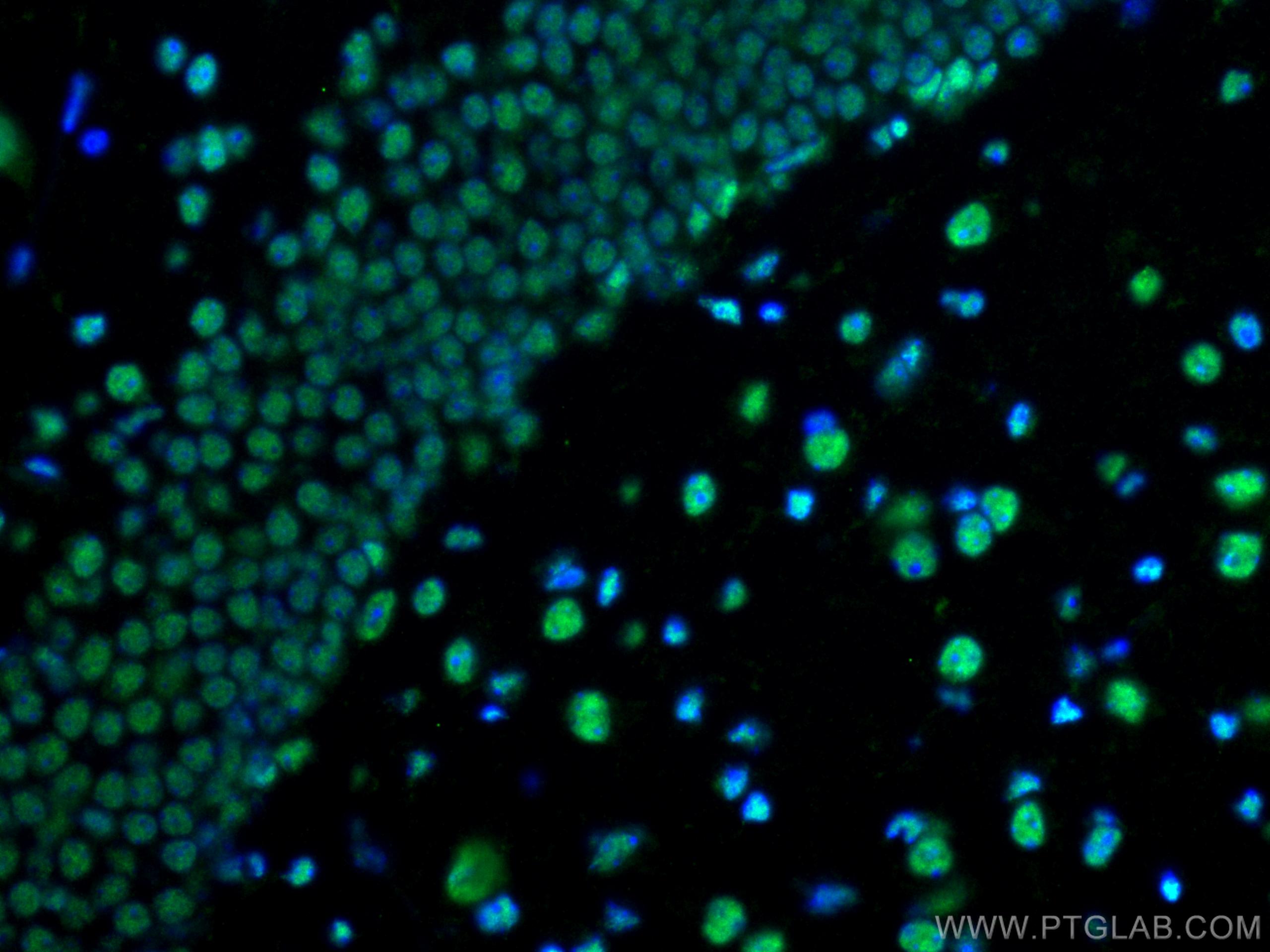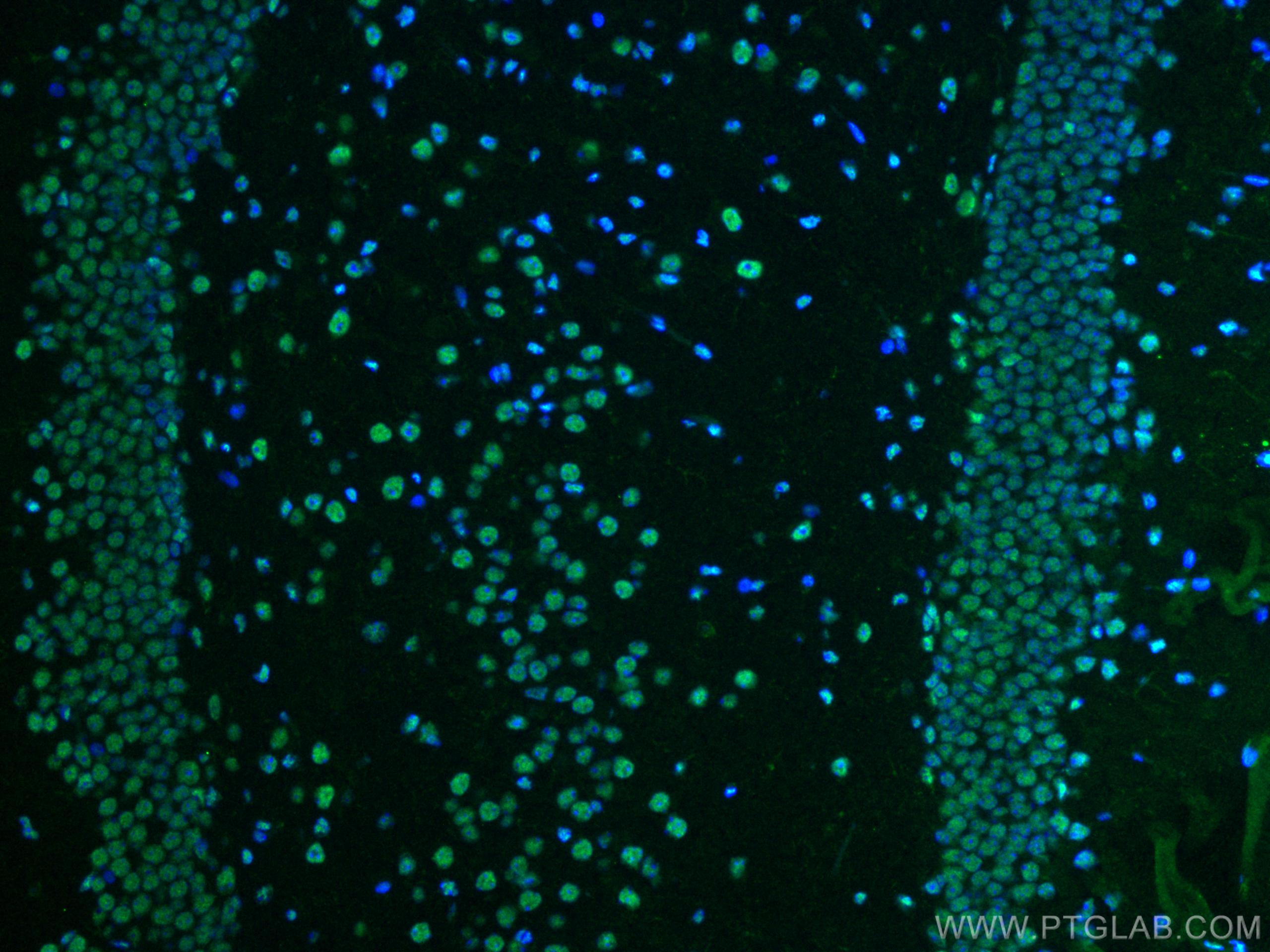Validation Data Gallery
Tested Applications
| Positive WB detected in | A431 cells, HeLa cells, rat heart tissue, mouse lung tissue, BxPC-3 cells, Jurkat cells, K-562 cells |
| Positive IHC detected in | human prostate cancer tissue, human pancreas tissue, mouse brain tissue Note: suggested antigen retrieval with TE buffer pH 9.0; (*) Alternatively, antigen retrieval may be performed with citrate buffer pH 6.0 |
| Positive IF-P detected in | mouse brain tissue |
Recommended dilution
| Application | Dilution |
|---|---|
| Western Blot (WB) | WB : 1:2000-1:16000 |
| Immunohistochemistry (IHC) | IHC : 1:50-1:500 |
| Immunofluorescence (IF)-P | IF-P : 1:50-1:500 |
| It is recommended that this reagent should be titrated in each testing system to obtain optimal results. | |
| Sample-dependent, Check data in validation data gallery. | |
Published Applications
| KD/KO | See 11 publications below |
| WB | See 41 publications below |
| IHC | See 4 publications below |
| IF | See 11 publications below |
| IP | See 4 publications below |
| CoIP | See 2 publications below |
| RIP | See 5 publications below |
Product Information
12582-1-AP targets PTBP1 in WB, IHC, IF-P, IP, CoIP, RIP, ELISA applications and shows reactivity with human, mouse, rat samples.
| Tested Reactivity | human, mouse, rat |
| Cited Reactivity | human, mouse, rat |
| Host / Isotype | Rabbit / IgG |
| Class | Polyclonal |
| Type | Antibody |
| Immunogen |
CatNo: Ag3277 Product name: Recombinant human PTBP1 protein Source: e coli.-derived, PGEX-4T Tag: GST Domain: 1-370 aa of BC013694 Sequence: MDGIVPDIAVGTKRGSDELFSTCVTNGPFIMSSNSASAANGNDSKKFKGDSRSAGVPSRVIHIRKLPIDVTEGEVISLGLPFGKVTNLLMLKGKNQAFIEMNTEEAANTMVNYYTSVTPVLRGQPIYIQFSNHKELKTDSSPNQARAQAALQAVNSVQSGNLALAASAAAVDAGMAMAGQSPVLRIIVENLFYPVTLDVLHQIFSKFGTVLKIITFTKNNQFQALLQYADPVSAQHAKLSLDGQNIYNACCTLRIDFSKLTSLNVKYNNDKSRDYTRPDLPSGDSQPSLDQTMAAAFGAPGIISASPYAGAGFPPTFAIPQAAGLSVPNVHGALAPLAIPSAAAAAAAAGRIAIPGLAGAGNSVLLVSNL 相同性解析による交差性が予測される生物種 |
| Full Name | polypyrimidine tract binding protein 1 |
| Calculated molecular weight | 60 kDa |
| Observed molecular weight | 60 kDa |
| GenBank accession number | BC013694 |
| Gene Symbol | PTBP1 |
| Gene ID (NCBI) | 5725 |
| RRID | AB_2176402 |
| Conjugate | Unconjugated |
| Form | |
| Form | Liquid |
| Purification Method | Antigen affinity purification |
| UNIPROT ID | P26599 |
| Storage Buffer | PBS with 0.02% sodium azide and 50% glycerol{{ptg:BufferTemp}}7.3 |
| Storage Conditions | Store at -20°C. Stable for one year after shipment. Aliquoting is unnecessary for -20oC storage. |
Background Information
Polypyrimidine tract-binding protein (PTBP1), also known as heterogeneous nuclear ribonucleoprotein type I (hnRNP I), is a nuclear protein that binds pre-mRNAs in specific regions of the hnRNA-protein complexes sensitive to micrococcal nuclease. It involves in pre-mRNA splicing and the regulation of alternative splicing events. PTBP1 promotes RNA looping when bound to two separate polypyrimidine tracts in the same pre-mRNA, and promotes the binding of U2 snRNP to pre-mRNA. Besides, it can cooperate with RAVER1 to modulate switching between mutually exclusive exons during maturation of the TPM1 pre-mRNA, and represses the splicing of MAPT/Tau exon 10
Protocols
| Product Specific Protocols | |
|---|---|
| IF protocol for PTBP1 antibody 12582-1-AP | Download protocol |
| IHC protocol for PTBP1 antibody 12582-1-AP | Download protocol |
| WB protocol for PTBP1 antibody 12582-1-AP | Download protocol |
| Standard Protocols | |
|---|---|
| Click here to view our Standard Protocols |
Publications
| Species | Application | Title |
|---|---|---|
Nat Cancer SULT1A1-dependent sulfonation of alkylators is a lineage-dependent vulnerability of liver cancers | ||
Nat Cell Biol Arg-tRNA synthetase links inflammatory metabolism to RNA splicing and nuclear trafficking via SRRM2 | ||
Blood circMYBL2, a circRNA from MYBL2, regulates FLT3 translation by recruiting PTBP1 to promote FLT3-ITD AML progression. | ||
Dev Cell Genome-wide analysis of pseudogenes reveals HBBP1's human-specific essentiality in erythropoiesis and implication in β-thalassemia. |

